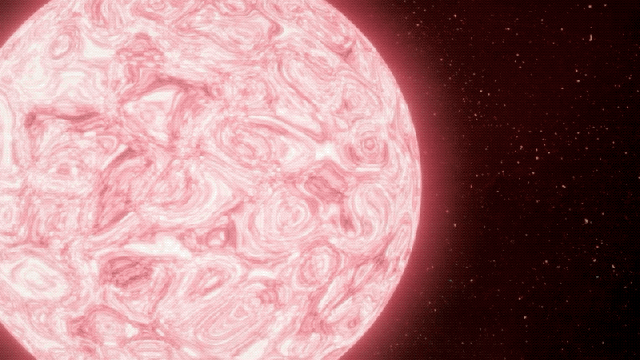Red supergiant stars are quiet and calm before exploding into Type II supernova — but not this one. The observation is important because it suggests some supergiant stars experience significant internal changes before going supernova
The Type II supernova was detected on Sept. 16, 2020, but astronomers had already been tracking significant pre-explosion activity during the previous 130 days. In a W. M. Keck Observatory press release, Raffaella Margutti, an associate professor of astronomy at the University of California, Berkeley, said it was “like watching a ticking time bomb.”
Type II supernovae result from the sudden collapse and violent explosion of massive stars. Only stars between eight and around 40 stellar masses undergo this form of death. “We’ve never confirmed such violent activity in a dying red supergiant star where we see it produce such a luminous emission, then collapse and combust, until now,” said Margutti, the senior author of the new study, published in the Astronomical Journal.
Indeed, the rare observation is shedding new light on the conditions and processes involved in Type II supernovae. “This is a breakthrough in our understanding of what massive stars do moments before they die,” said Wynn Jacobson-Galán, the lead author of the study and an astronomer at the University of California, Berkeley. “Direct detection of pre-supernova activity in a red supergiant star has never been observed before in an ordinary Type II supernova.”
The explosion, designated SN 2020tlf, was detected by the Young Supernova Experiment transient survey, the purpose of which is to “find statistical samples of young, red, and rare transients [i.e. short-lived celestial events], better understand black hole variability, and to constrain the fundamental cosmological parameters of the universe.”
The team used the Pan-STARRS telescope and W. M. Keck Observatory, both in Hawaiʻi, to observe the red supergiant and subsequent supernova. Pan-STARRS, for a period of roughly 130 days, tracked the tremendous amounts of radiation pouring off from the red supergiant, while Keck, with its Low Resolution Imaging Spectrometer, tracked the supernova’s first flash, initial spectra, and post-supernova behaviour.
SN 2020tlf is located 120 million light years away in galaxy NGC 5731. The doomed star, at an estimated 10 to 12 solar masses, was surrounded by dense circumstellar material both before and at the time of the explosion, according to the new study.
The new observation suggests some supergiant stars experience violent eruptions and bright explosions in the months and weeks prior to going supernova. Previous observations had suggested a period of calm before the storm, but not all supergiant stars experience their deaths in the same way, the new data suggests.
The detection of “precursor emission,” as the paper describes it, combined with the presence of thick circumstellar material, suggests some kind of physical mechanism is responsible for the observed mass loss and luminosity. At the same time, the bright radiation produced by the red supergiant during its final months “suggests that at least some of these stars must undergo significant changes in their internal structure that then results in the tumultuous ejection of gas moments before they collapse,” according to the press release.
Looking ahead, researchers with the Young Supernova Experiment will now seek other examples of bright radiation coming from red supergiants, and then connect this behaviour to impending supernova explosions.
“I am most excited by all of the new ‘unknowns’ that have been unlocked by this discovery,” said Jacobson-Galán. “Detecting more events like SN 2020tlf will dramatically impact how we define the final months of stellar evolution, uniting observers and theorists in the quest to solve the mystery on how massive stars spend the final moments of their lives.”
More: This ‘Unusual Star’ Is Unlike Anything Astronomers Have Seen Before
